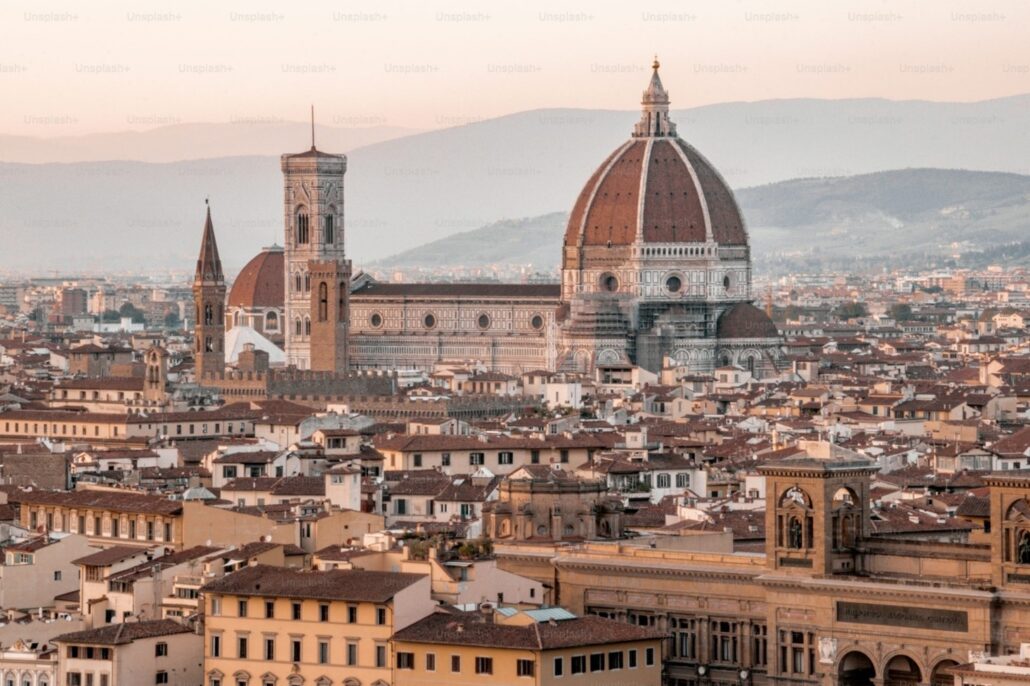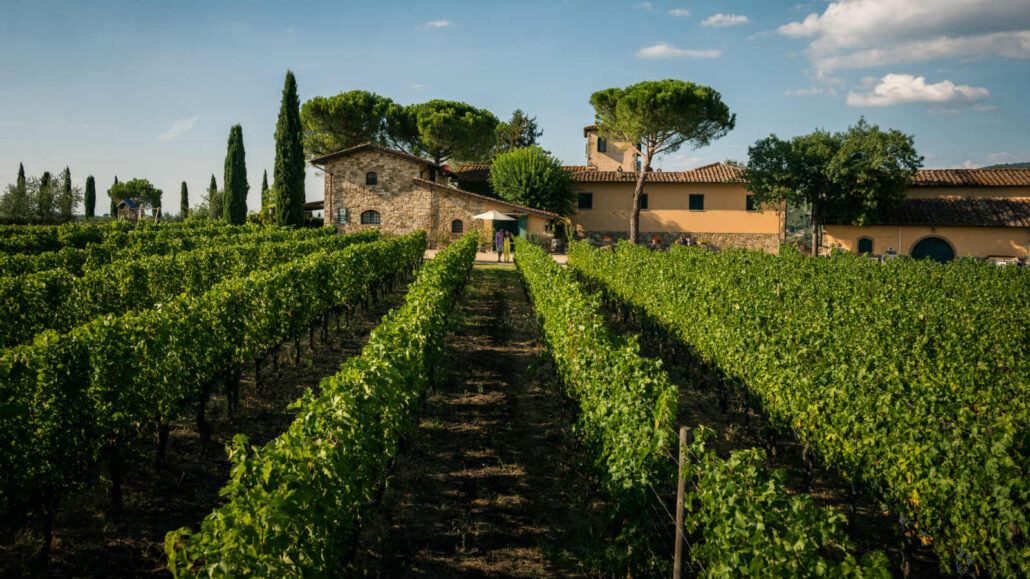ITALIA – IL BEL PAESE
“You may have the world if I may have Italy”
Giuseppe Verdi – Italian opera composer

Landscapes that will take your breath away, rich history, and delicious food, your trip to Italy will be nothing short of unforgettable
Italy, country of south-central Europe, occupying a peninsula that juts deep into the Mediterranean Sea. Italy comprises some of the most varied and scenic landscapes on Earth and is often described as a country shaped like a boot. At its broad top stand the Alps, which are among the world’s most rugged mountains.
Since the rise of the Roman Empire, Italian art, architecture, and culture have had an influence around the world. Famed Italian painters include Leonardo da Vinci and Michelangelo. Italy is also at the heart of the Catholic Church, which is governed from Vatican City, a city-state surrounded by Rome.
When in Italy, eat and drink everything. A meal in Italy is a leisurely and elegant affair, moving slowly from aperitivo to antipasto to first course to second course to dessert. Each step on this delightful journey will showcase local ingredients in the pinnacle of readiness. People often refer to Italian cuisine as “simple”; really, it’s a very sophisticated connoisseurship of seasonality and quality.
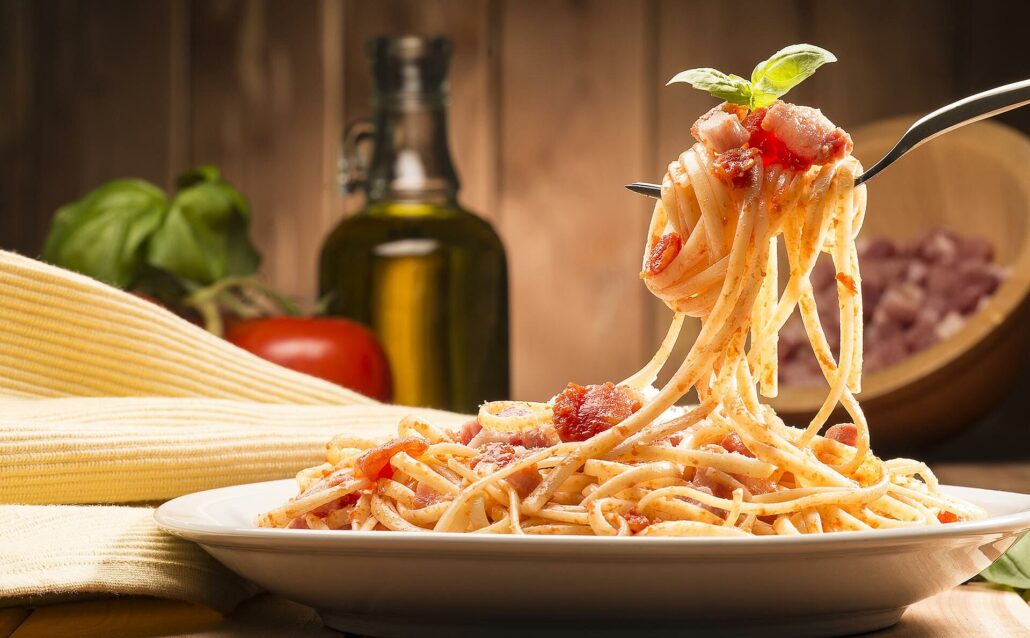
Italy, a country known for its rich culture, breathtaking landscapes and exquisite cuisine, fascinates travelers and historians alike. From the snow-capped Alps of the Aosta Valley to the sunny beaches of Sicily, each of Italy’s 20 regions offers a unique blend of history, art and gastronomy.
Let’s start in the north with the Aosta Valley, which is known for its alpine landscape and ski resorts. Right next door, in Piedmont, the wines and the picturesque Alps enchant every visitor. The Lombardy the economic heart of Italy, shines with trendy cities and idyllic lakes. Friuli-Venezia Giulia offers an enchanting mix of mountain scenery, sea and historic sites, while Trentino-South Tyrol offers breathtaking mountain scenery and outdoor activities. In Veneto, the romantic city of Venice with its canals and historic architecture attracts visitors from all over the world. Liguria impresses with unique coastal landscapes such as Cinque Terre and Riviera Ligure.
In the center of Italy lies the Tuscany a region famous for its picturesque hilly landscape, its wines and its artistic treasures. Umbria the «green heart of Italy», impresses with its picturesque hilly landscapes and medieval towns. The Marche often referred to as Italy’s best-kept secret, fascinate with their unspoiled landscapes and cultural wealth. Lazio with the eternal city of Rome is a melting pot of history and culture.
The southern regions of Italy are rich in traditions and natural wonders. Campania, home to the famous Amalfi Coast, impresses with its breathtaking coastal landscape and rich history. Puglia is a dream destination with its characteristic trulli houses and crystal-clear beaches. Calabria and Basilicata often overlooked, offer unspoiled landscapes and a deeply rooted culture. Sicily and Sardinia the two largest islands in the Mediterranean, are famous for their unique cuisine, ancient ruins and spectacular beaches.
Every region in Italy is a mosaic of history, culture and nature. From the traditional villages in Molise and the Emilia-Romagna known for their gastronomic delights, to the lively cities and rich history of the Abruzzo Italy offers unparalleled diversity. Each region has its own traditions, its own cuisine and its own dialects, which together form the fascinating mosaic of Italian culture.
HIGHLIGHTS OF ITALY
LAZIO is not only ROME
Lazio is also the land of historic churches and abbeys scattered over the territory, of large and small historic centres and picturesque villages, of the consular roads that radiate out from Rome to the rest of Italy, crossing Lazio and its landscapes.
ROMA, THE ETERNAL CITY
All roads lead to Rome, right? Rome was founded in 753BC by its first king, Romulus. It grew into a rich and powerful city during the next few hundred years.
Roman legend says that Romulus had a twin brother called Remus. As babies they were abandoned in the area which later became Rome. A she-wolf found and raised them, but when they grew up, Romulus fought and killed Remus and became the first ruler of Rome!
The Romans built such a huge empire and conquered new lands, thanks to their strong army, but… they didn’t spend all their time fighting – they were amazing architects and engineers too!
The 6 most visited monuments in Rome
They are unmissable and, absolutely, you cannot miss them during your first visit to the Eternal City.
- Vatican and Piazza San Pietro
- The Colosseum
- The Roman Forum and the Palatine Hill
- The Trevi Fountain
- Navona Square
- The Pantheon
What and where to eat in Rome: Experience Rome’s local foodie districts, including Trastevere and Campo de‘ Fiori. Includes a menu of seasonal items including many of Rome’s favorites. Lots of wine and food… more than most can handle!
- A first course such asPasta alla carbonara, made with eggs, guanciale bacon and Roman pecorino cheese, is practically the city’s official dish. Alternatively, try some Bucatini all’amatriciana, pasta seasoned with guanciale, tomato sauce and Roman pecorino cheese. One dish that everyone can agree on is Roman gnocchi, made with a semolina-based dough.
- If you prefer focusing on meat dishes, start withSaltimbocca alla romana (slices of veal topped with prosciutto and sage)
Shopping: Rome is certainly one of the focal cities of Italian shopping tourism. One of the Eternal City’s most lusted-after areas is the so-called “Trident,” formed by Via dei Condotti, Via Borgognona, Via Frattina and by the adjacent Spanish Steps: the Trident is perhaps the most high-end destination for Roman shopping, with a concentration of renowned jewelers and important Italian and international flagships and ateliers.
TOSCANA,
The most beautiful land in the heart of Italy
Tuscany is made up of ten provinces: Florence, Arezzo, Grosseto, Livorno, Lucca, Massa Carrara, Pisa, Pistoia, Prato and Siena. Tuscany is a destination for many travelers seeking to experience its stunning landscapes, delicious food and wine, and rich culture.
FIRENZE,
Birthplace of Italian Renaissance
Florence is considered the birthplace of the Renaissance. A turbulent political history included periods of rule by the powerful Medici family, religious and republican revolution. From 1865 to 1870 was the capital of Italy. Known as, The jewel of the Renaissance
MUST VISIT IN FLORENCE
- Duomo (Santa Maria del Fiore)
- Uffizi Gallery
- Palazzo Vecchio (Piazza la Signoria)
- Ponte Vecchio (The famour bridge)
- Accademia Gallery-Michelangelo’s David
- Basilica di Santa Croce
- Pitti Palace
- Piazzale Michelangelo- Viewpoint in Florence
- Fontana del Porcellino
- Piazza della Repubblica
What to eat in Florence ”Good food. Good wine. Good friends”
At the top of any list of what food Florence is known for must be the famous Florentine steak.
Florence is one of the best spots in Italy for truffle hunting, and this delectable luxury ingredient is an important feature of Tuscan cuisine. Truffles of different types can be found year-round.
One of the top foods to try in Florence, ribollita is a hearty soup made with vegetables, the city’s beloved cannellini beans, olive oil, and bread.
A nice menu can start with Crostini Toscani, followed by Ribbon Pasta with Wild Boar or Pasta Noodle with Porcini Mushrooms, and for dessert, Almond Biscuits with Sweet Wine.
In Florence we are famous for lampredotto sandwiches, Prepared with beef or veal innards.
Trippa alla Fiorentina is another typical Florentine second course made from offal, tripe, which is part of the so-called fifth quarter. It is a very inexpensive cut made from different parts of the bovine stomach (cuff, cross, etc.).
Nice and typical Trattorias in Florence can be Marione, 13 Gobbi, Il Magazzino, Garga, la Giostra, something more particular Cibreo, for a nice pizza, Sophia Loren and for nice lunch with view, Il David.
All about shopping!
In Florence there is no specific street to go shopping. Florence shops are located throughout the historic city center, from the station to the Oltrarno neighborhood. However, in some areas, you will find more easily certain types of products.
- Via Tornabuoni is the street of luxury boutiques.
- On the Ponte Vecchio you will find the finest jewelers.
- Oltrarno neighborhood you can find the artisans and small shops.
CHIANTI REGION
Chianti is a very large area in the region of Tuscany which convers around 40% of the region’s territory. Between Florence and Siena, framed by romantic hills and fairytale castles, we find Chianti. A succession of beautiful landscapes made up of vineyards, woods and suggestive villages all to be discovered.
Chianti has also been the place of constant troubles between Florence and Siena.
Since they were fitting, they also built a lot of Medieval towns on the hills between the territory of Florence and Siena to defend their land. The Middle Ages was basically the moment when all the small villages, abbeys and castles were built.
This is also the moment when grapes and olives started becoming a business in a way. Because the rich aristocratic families that used to live in Chianti were a trading selling wine and olive oil.
40% of the Chianti territory is covered by forest, 20% vineyards, 8% olive groves and the rest are basically, covered by the villages. A huge part of the Chianti is covered with forest, and this is very important to produce wine because forest helps keep the mild climate on the hills and protects the vineyards from the heat in summer.
Best towns to visit in Chianti
- GREVE IN CHIANTI
Greve in Chianti is the largest town in the Chianti region and still retains the liveliness that has characterized it since the Middle Ages.
Piazza Matteotti is the main landmark, and around the square we find some of the best restaurants where you can taste typical local cuisine and nice shops for buying souvenirs.
- MONTEFIORALLE
The village of Montefioralle is nestled in the Chianti hills just above Greve in Chianti. The village develops right around the castle and is a concentration of little streets that all lead back to the feudal tower.
- CASTELLINA IN CHIANTI
A pretty village in the Sienese Chianti area, it is impossible to pass through Castellina and not stop for a tasting in the numerous wine shops in the village.
Walks through vineyards, wine tastings, visits to medieval villages, truffle hunting and cooking classes: a unique experience to immerse yourself in the heart of the Chianti
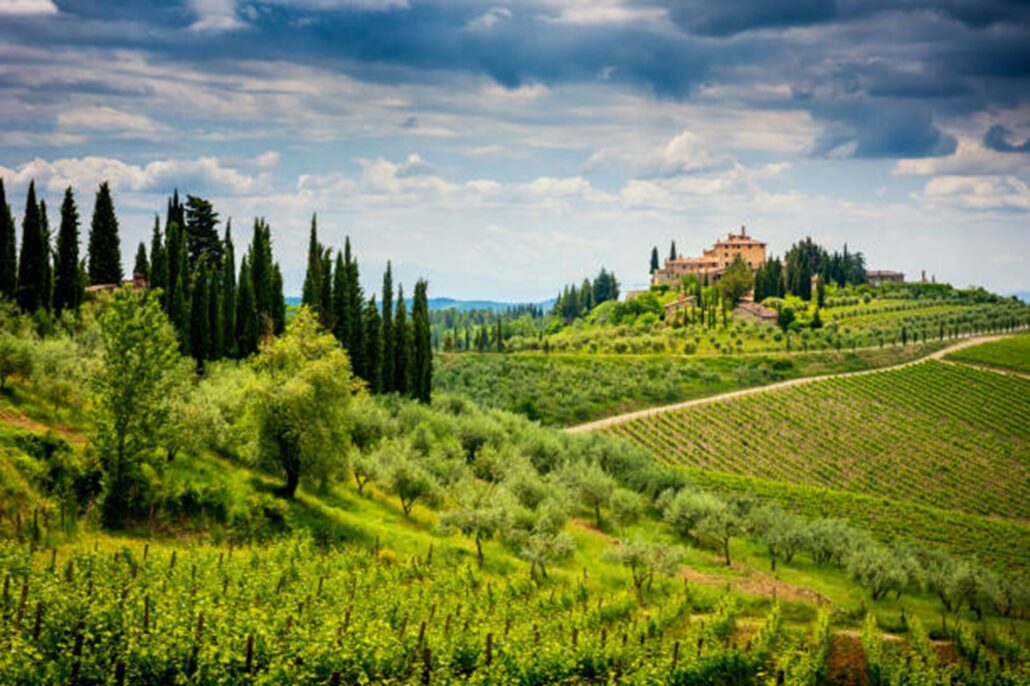
SAN GIMIGNANO, MONTERIGGIONI AND SIENA
- SAN GIMIGNANO
A beautiful town nestled between the Sienese hills and the sunny Val d’Elsa hills, surrounded by thirteenth-century walls and rich in still intact medieval charm.
Start by filling your wineglass with Vernaccia di San Gimignano, which is straw yellow in colour with golden reflections that become more pronounced with age.
Before you leave, however, remember to stock up on the precious local gold: the saffron of San Gimignano, a precious spice with an intense flavour and a protected designation of origin.
The world-famous Gelateria di Piazza is right in the center of Piazza della Cisterna and is the best gelato in San Gimignano.
- MONTERIGGIONI
Monteriggioni is a charming hilltop town in Tuscany, Italy, a medieval walled village. It is in a spectacular location, surrounded by olive groves, vineyards, and farmland, with the town’s 14 towers and well-maintained walls. The castle town (or fortified village) was built in 1213 by Siena to protect the area from neighboring Florence.
- SIENA
A city of thousands of colours, rich in history and culture and with a medieval charm that is still nearly intact today.
Every corner of Siena hides treasures and glimpses to be photographed.
Strolling through the red streets of Siena, you will be attracted by the inviting smells of Sienese cuisine, which has its roots in the past and is based on genuine products such as vegetables, pulses and meat.
For a richer meal, you can play it safe with pici pasta with wild boar ragout served in every restaurant and trattoria in Siena.
Sienese cuisine is also rich in sweets such as panforte di Siena, which dates to the 13th century and can be found in any café and pastry shop in the city. Cavallucci are tasty biscuits with walnuts and candied fruit, but if you love almonds, you might want to try ricciarelli of Siena, oval-shaped sweets made of almond paste enriched with vanilla and candied fruit.
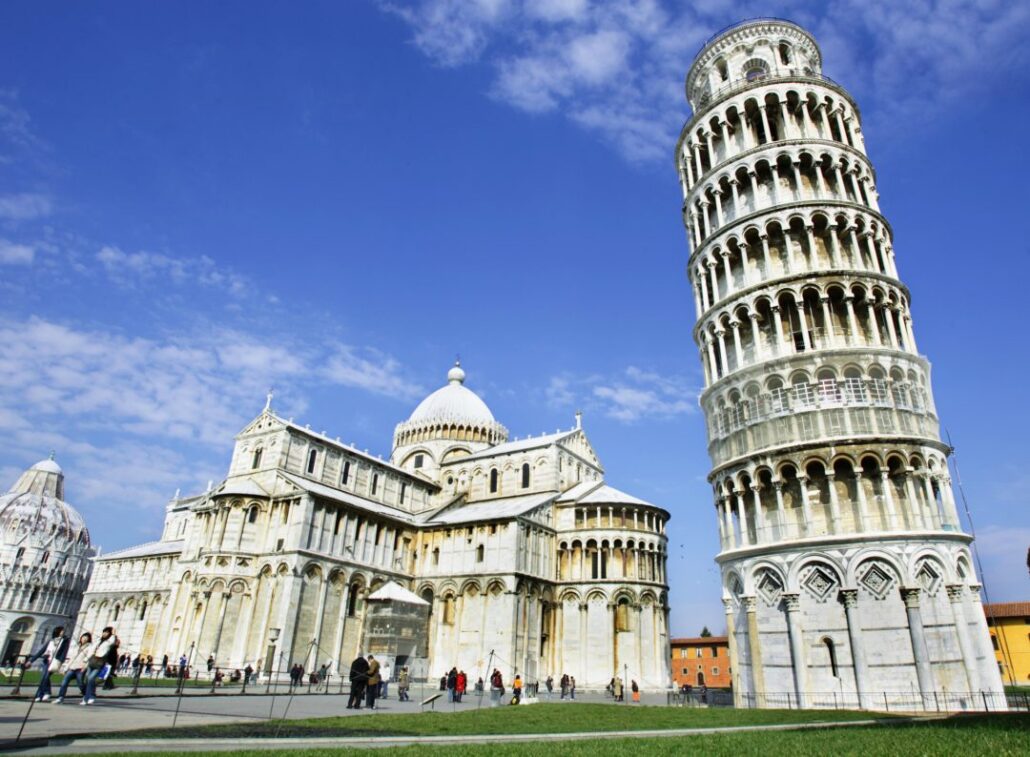
LUCCA AND PISA
- LUCCA
Lucca is an ancient and storied town located between Florence and Pisa in the Italian region of Tuscany. It is encircled by a 4km four-sided wall called the Passeggiata delle Mura Urbane.
The town is often nicknamed the “Town of 101 Churches” for its proliferation of churches, several of which date back to the 8th century.
With its central streets dotted with boutiques, elegant shops and patisseries, the city leaves no room for boredom.
Lucca’s gastronomical traditions are truly irresistible! It is a genuine, simple cuisine that owes much to its humble agricultural origins and is based on seasonally available crops.
What to eat in Lucca? You can’t miss these three specialities:
- Start with garmugia, a spring soup made with artichokes, peas, asparagus and bacon served with toasted bread.
- Considered a gourmet speciality, tordelli lucchesi are fresh pasta tortelli stuffed with pork and beef, broth-soaked bread, Parmesan cheese, eggs and herbs, then dressed with meat sauce and a sprinkling of cheese.
- Finally, the buccellato di Lucca is a sure winner for those with a sweet tooth with its doughnut shape and aniseed aroma. Here it is eaten by dipping it in wine.
- PISA, The City of the Leaning Tower
Vibrant and animated by the great history exuding from its walls, the Leaning Tower of Pisa, the city’s symbol and the most famous Italian monument in the world, immediately springs to mind. Along with the cathedral and the baptistery, the Leaning Tower of Pisa is part of a complex of works that Gabriele D’Annunzio dubbed «Miracles», hence the name Piazza dei Miracoli, which perfectly defines the place that houses them.
Monuments, museums and impressive buildings of inestimable artistic value preserve the memory of Pisa as a Maritime Republic that, for a long time, was the undisputed master of the Mediterranean.
The cuisine of Pisa is imaginative and tasty. Regardless of its poor origins, it combines land and sea in explosive combinations of flavour that the whole world envies. What to eat in Pisa?
- Pappa al pomodoro, naturally: a first course of peasant origin prepared with stale Tuscan bread, tomatoes, basil, garlic and olive oil.
- But also, thecastagnaccio, a poor man’s cake that will win over the sweet toothed: typical of Pisa, prepared with chestnut flour, sultanas, walnuts, pine nuts and chopped rosemary.
- And then there is the minestra di pane, also known as zuppa alla pisana (bread soup), which is a tasty dip made from a mix of stale Tuscan bread, white beans, kale or cabbage, chard, potatoes, carrots, ham rinds, tomatoes and other simple ingredients for flavour.
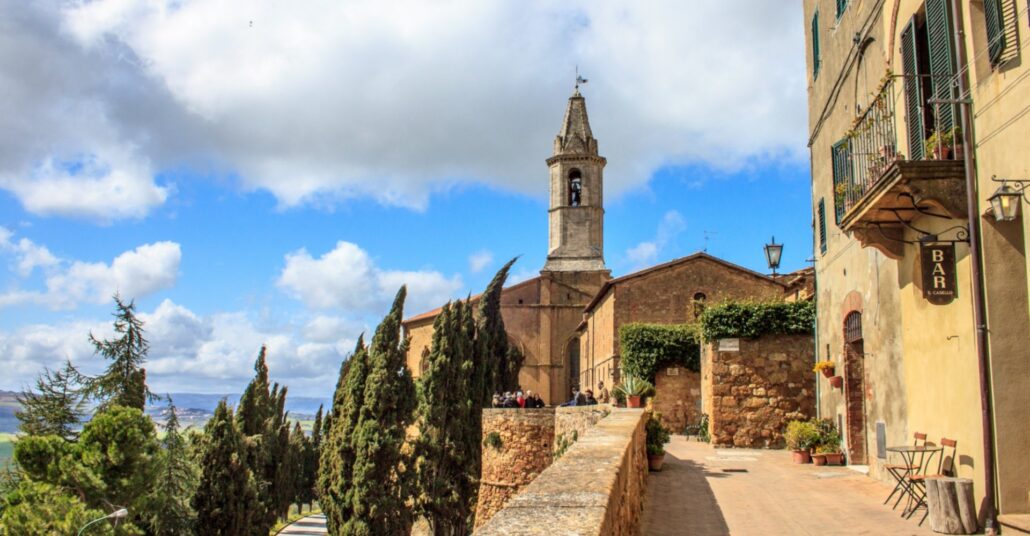
VAL D’ORCIA
Green Tuscan hills characterized by dense vegetation, dotted with vineyards, olive groves, cypresses, beech and chestnut groves, a backdrop of marvelous castles, medieval villages and rural houses.Val d’Orcia is a wide and beautiful countryside in southern Tuscany, close to the border with Umbria and on the slopes of Mount Amiata, stretching along the agricultural hinterland of Siena. It’s typical medieval Tuscan villages such as Pienza, Montalcino e Montepulciano are perfect destinations to dive into the soul of the place, while savouring its well-known food and wine specialties.
A visit to the Val d’Orcia should begin in Montalcino, for the enchantment of its landscape, its 14th-century fortress dominating the surrounding area, and its world-class winemaking tradition: the legendary red wine Brunello di Montalcino was born here.
We go on to Montepulciano, another village closely linked to the delicious wine produced here. Perched atop a hill with views of the Val d’Orcia and Val di Chiana, Piazza Grande has its heart, the ideal starting point for wandering through romantic alleyways.
The next stop is Castiglion d’Orcia, a natural terrace overlooking the Val d’Orcia to the springs of Monte Amiata. Its ancient towers and districts are rich in history and natural beauty, starting with the Bagni San Filippo spa resort. A tour of the Val d’Orcia must include a visit to Pienza, the village that Pope Pius II transformed into a town with a wonderful 15th-century appearance.
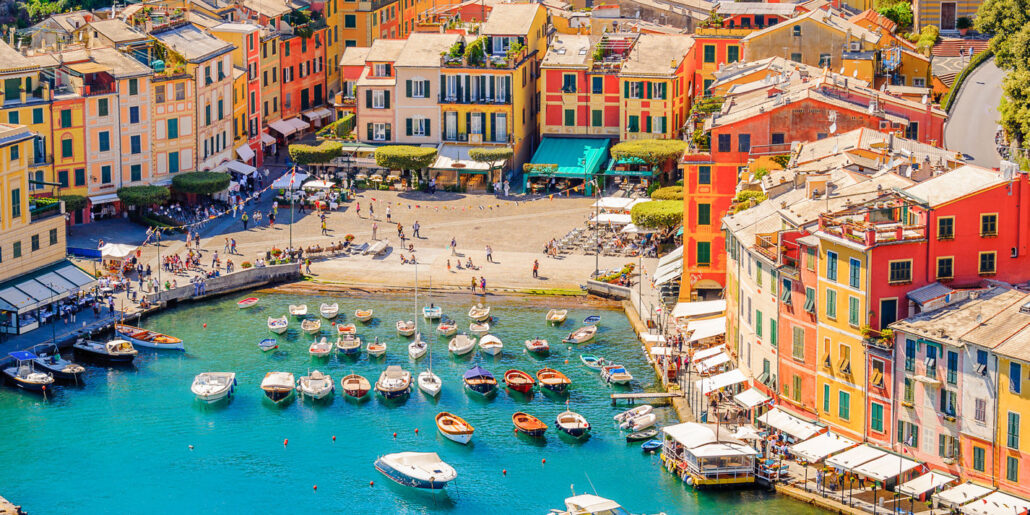
- LIGURIA is a wonderful strip of land enclosed between the sea and the mountains, with pastel-coloured houses and breathtaking views. With lush unspoilt nature, many small towns to discover and an incomparable culinary tradition, it enraptures the eye and the heart.
- CINQUE TERRE an indented stretch of coastline on the eastern Ligurian Riviera, the Cinque Terre are jewels set, in the province of La Spezia. Monterosso al Mare, Vernazza, Corniglia, Manarola and Riomaggiore, moving eastwards, are the charming towns that enjoy this privileged position on the Mediterranean Sea.The first is Monterosso al Mare, a renowned tourist resort with elegant villas and the beautiful Fegina beach. Its carruggi, the typical narrow streets, lead to the old centre, where you can admire its masterpieces, including churches and monuments.
We continue to Vernazza, a village that developed around the small port already used in Roman times. The small square overlooking the sea and the Gothic church are the main attractions together with the Doria Castle, a defence against attacks from the sea.
The third stop goes straight to the heart and leaves you breathless: it is Riomaggiore, the heart of the park of the same name and a picturesque fishing village with tall, narrow houses painted in pastel colours and narrow alleyways.Also worth a visit is Corniglia, a wine-growing village perched on the ridge of the promontory and connected to the beach by a stairway. Lastly, Manarola in the Cinque Terre leaves you speechless: it stands on a large black rock and is known for producing an excellent olive oil and the sought-after raisin wine Sciachetrà.
Typical products from the Cinque Terre
A holiday in this area must include wine tasting of the Cinque Terre, and in particular the most important productions: the DOC white wine and the Sciacchetrà.
The whites, which come from Bosco, Albarola and Vermentino white grapes, are served chilled: perfect for sipping with appetisers, such as the anchovies of Monterosso, fished from June onwards and left to mature in salt, in chestnut barrels or terracotta pots.
To accompany a dessert, the gentle, medium-sweet Sciacchetrà delle Cinque Terre, an intense and structured passito wine. Try it with dry pastries, pandolce genovese, blue cheeses and desserts in general.
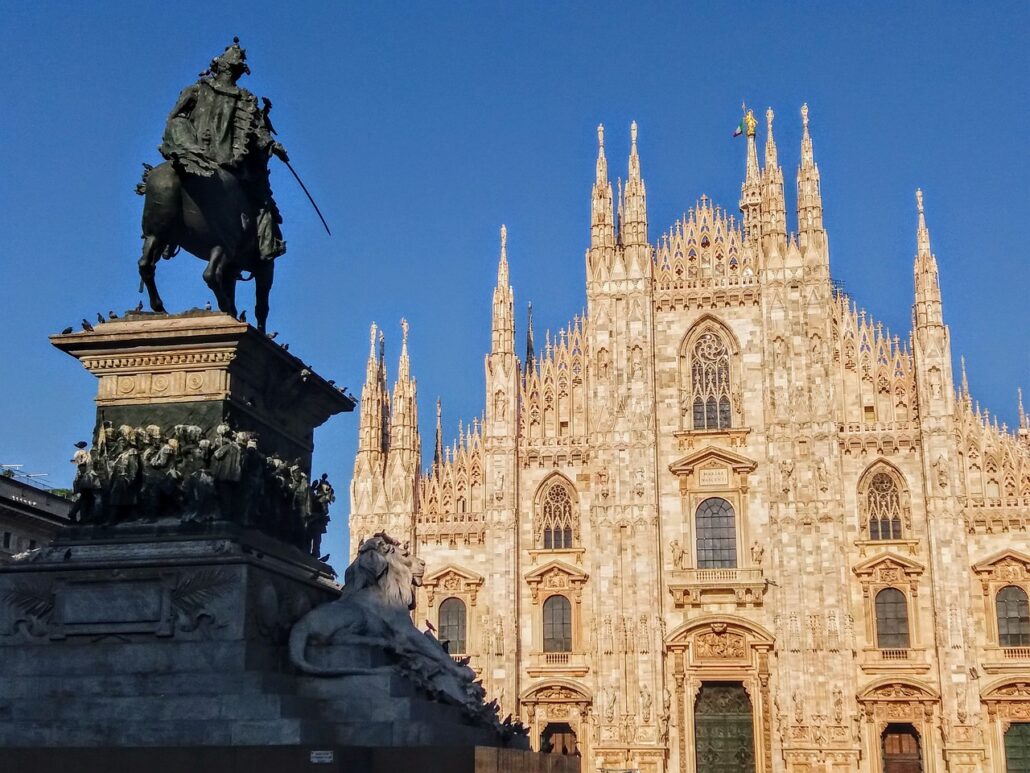
- LOMBARDIA – Lombardy is a region in the north of Italy known for its industry and finance, of course, but also for its art and extraordinary landscapes, starting with the picturesque lakes and its mountains, Valcamonica and Valtellina in primis.LAKE COMOThe landscape of Lake Como combines mountains, forests, flower-filled parks and clear waters overlooked by dreamy villas and villages to explore. The best way to visit? By boat. A boat taxi system connects all the main resorts on the two branches of the lake. In the center is Bellagio, the pearl of the Lario.
- BELLAGIO
Bellagio might be the most iconic destination on Lake Como. The picturesque village is home to scenic cobbled lanes and stairways lined with charming boutiques, gelato shops, cafes and restaurants – Salita Serbelloni is the most famous passageway. Bellagio is small enough to visit as a day trip, but its location between the lake’s two branches makes it the ideal home base for exploring the surrounding region.
COMO is the largest settlement on Lake Como, the city where most visitors arrive by train. It’s perfectly lovely, and has the most options in terms of lodging, food and shopping, but its location on the southern tip of the lake isn’t the ideal location for exploring the region.
Como is the “City of Silk”, where you can find the Como Silk Museum that is the only museum in the world able to show the visitor the entire production process, from silkworm to colorful yarns, from hand printing to fashion collections.
GET AROUND LAKE COMO
The most scenic way to see Lake Como is by boat. The three options for getting around on the water are the public ferry, self-drive boat rental and boat rental with a captain. I’ll quickly breakdown all the options below.
- FERRY– The ferry system is frequent with lines that connect the most popular villages and towns on the lake including Bellagio, Cadenabbia, Como, Lenno, Menaggio, Nesso, Tremezzina, Varenna and dozens more. Ferry tickets can be purchased at the small jetty kiosks, no need to book in advance.
- BOAT RENTAL (SELF-DRIVE)– It’s possible to rent a boat on Lake Como, even if you do not have a boat license. These boats are small and fairly straight forward to operate. The self-drive option gives you the most freedom to explore the lake. Rental prices range from €75 to €350 (excluding fuel), depending on the length of time.
- PRIVATE BOAT (W/CAPTAIN)– Private boat rental with a captain is the most expensive option for exploring Lake Como. Prices vary based on length of time and type of boat (the iconic wood panel boats are more expensive).
Lake Como gives local fishermen twait shad, bleak, lavarello, perch, salmon trout, pike, and chub, often found in Como’s recipes accompanied by the local savors, such as polenta and risotto.
- MILANO much more than the world’s fashion capitalMilan is a lively and dynamic city, where history and modernity live in perfect balance. Milan is a cosmopolitan metropolis and is considered one of the world’s fashion and design capitals. It is also a strategic financial centre at the international level, so much so that the Italian stock exchange is based here.
Let’s not forget its luxury cuisine, from traditional to fusion cuisine, from exhibitions to live shows, best enjoyed after savouring a classic aperitif.
The first thing to do when you arrive is to visit Milan’s quintessential central monument: the Duomo, you need to visit also, the Castello Sforzesco or the Arco della Pace. Other top attractions such as the San Siro stadium, the Teatro alla Scala, Galleria Vittorio Emanuele II, Brera Art Gallery, and Da Vinci’s painting of ‚The Last Supper‚ are sights that you should not miss.
make sure you try out these essential dishes:
- You can’t visit Milan without eating the famous risotto alla milanese, with its unique saffron-infused yellow colour, traditionally served with ossobuco, braised veal shank completes with bone and marrow.
- Milano and cotoletta alla milaneseare a perfect match. Meat lovers must try the mondeghili, tasty meatballs made with beef, and the cassoeula, a stew made with pork and vegetables.
Shopping in the fashion capital
You already know that this fashion city is the place to go for extensive shopping. If budget is not an issue, visit the Quadrilatero d’Oro (the Golden Quadrangle) with top designers and brands. In the Brera district you can find vintage items and more special boutiques. For normal prices, the big chains in the streets around the Duomo are a great place to shop. Also, the fashion outlets just outside Milan are worth a visit.
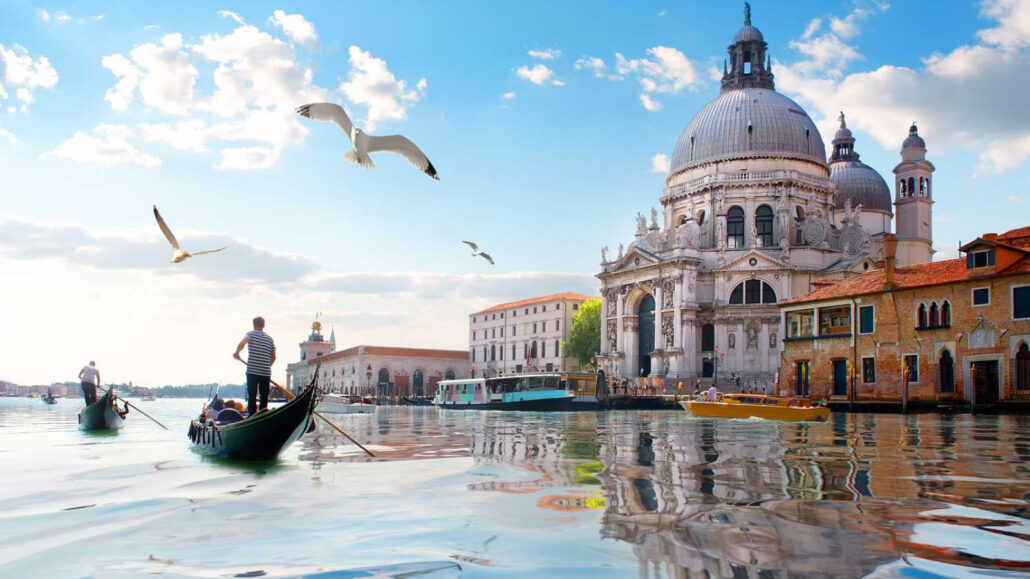
VENETO
Veneto, a region of wonder, with cities of art of undisputed beauty, as well as the most pristine nature.
VERONA a city to fall in love with to honour Romeo and Juliet. Verona is a magical city in northern Italy where art, history and culture combine to give you wonderful memories. The city’s two thousand years of history are well represented by the stupendous Arena di Verona, the city’s iconic amphitheatre that stands out on Piazza Bra. The other symbol of the city is just a few steps away. We are in the historical centre of Verona, and Juliet’s house, an evocative medieval palace that belonged to the Cappelletti family.
Some of the city’s most beautiful monuments are here: Palazzo Maffei, Duomo of Verona, and Piazza delle Erbe.
Talking about food and wine
In Veneto, good wine is an important reality and Verona is no exception. Valpolicella arrives on Veronese tables directly from the hilly area above the city, as does Amarone, a powerful red wine to pair with autumn and winter foods such as stews, stews and roasts.
Amarone is also the protagonist of a first course that you can find in every restaurant or trattoria in the city: risotto all’amarone, prepared strictly with Vialone Nano rice, a particular variant of rice cultivated in the Veronese lowlands. While sipping a glass of wine, you should try the Venetian soppressa, a tasty salami enriched with garlic that cannot be missed at aperitifs in the streets of the city.
And at Christmas, don’t miss out on a delicious Pandoro, born right here.
VENEZIA – VENICE
Timeless and magical, the soul of Venice is made up of 118 islands united by more than 400 bridges, separated by canals that act as waterways, forever bustling with gondolas and boats in a never-ending back-and-forth. Everyone should visit Venice at least once in their lifetime. Certain aspects are well-known, such as the fact that it is a floating city, yet there are also curiosities and details that perhaps not everyone knows about that make Venice an even more unique and precious Italian jewel. Leaning towers, architectural oddities, ancient quarters, local traditions and festivals are very special features of this city.
A number of highlights and landmarks should not be missed during your visit to Venice, such as the Saint Mark’s Square with the adjacent St. Mark’s Basilica or a tour with the authentic gondolas. Other highlights to visit are Palazzo Ducale, Canal Grande & Rialto Bridge, Teatro la Fenice, Islands by boat: Murano, Burano & Torcello.
Typical Food and Drinks to Try in Venice
Cicchetti, Cheap and Tasty, Cicchetti are typical Venetian starters or small plates of finger foods accompanied by a glass of wine or Spritz, when you go to a bar in Venice and ask for a spritz, they’ll ask if you want Campari or Aperol, Baccala Mantecato, a dish made of stockfish, Sarde in Saor, a dish that consists of sardines, onions, and balsamic vinegar, little lasagna with black squid ink and Risi e Bisi is a simple meal made of rice and peas.
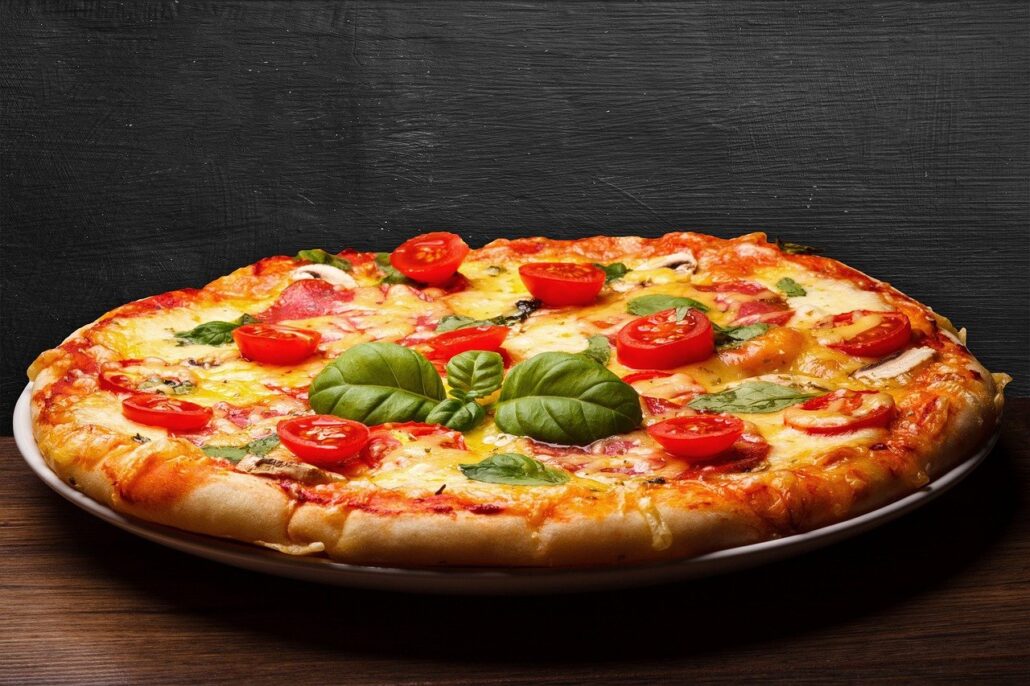
CAMPANIA a consistently mild climate, lush nature framing breathtaking landscapes, unspoilt villages and fairy-tale coastlines. A destination for the soul, the eyes and the palate.
NAPOLI: from its charming waterfront under the shadow of Vesuvius, to its beautiful and bustling historic centre: Naples is a stunning city.
Piazza del Plebiscito, in the western part of the city centre, welcomes you with the symbolic embrace of the iconic colonnade in which the Royal Papal Basilica of San Francesco di Paola is set, one of the most important examples of Neoclassical architecture in Italy. On the opposite side of the square stands the imposing Royal Palace, the historical residence of the Spanish viceroys. The complex includes the picturesque gardens, the Vittorio Emanuele III National Library with over 1 million volumes and the San Carlo Theatre. Founded in 1737, the San Carlo is the oldest opera house in the world still in operation.
Lose yourself along Via Toledo, one of the most important streets in Naples and one of the main commercial thoroughfares. Built alongside the ancient city walls in 1536, it connects Piazza Trieste e Trento with the imposing Piazza Dante, crossing the city from north to south.
The Cathedral, the name given to the Metropolitan Cathedral of Santa Maria Assunta, is a glorious example of Gothic, Baroque and Neo-Gothic architecture and one of the most important religious buildings in the city. On the inside, you cannot miss the Museum of the Treasure of San Gennaro, which preserves sacred and valuable objects related to the cult of San Gennaro. The Saint’s relics are venerated here, which is where, three times a year, Neapolitans witness the ritual of liquefaction
Close by is another of Naples‘ treasures, the Sansevero Chapel Museum which hosts the Cristo Velato by Giuseppe Sanmartino, one of the most striking sculptures in the world: a single block of marble which was carved in 1753, depicting the lifeless body of Jesus on which a transparent shroud seems to lie. Walk down Via di San Gregorio Armeno in the same area, and lose yourself among the many craft shops selling cribs.
In Piazza del Gesù Nuovo stands the Baroque obelisk of the Immacolata, the last of the three great obelisks (or spires) of Naples, together with that of San Gennaro, in Piazza Riario Sforza, and that of San Domenico, in Piazza San Domenico Maggiore. The ancient Monumental Complex of Santa Chiara is just a few steps away. Built from 1310 onwards, it is a splendid Franciscan citadel. But the most beautiful part is the cloister covered in brightly coloured 18th-century majolica. If you visit the centre of Naples, you cannot miss the basilica of San Lorenzo Maggiore, one of the oldest in the city, with its monumental complex and 15th century bell tower. The church of San Domenico Maggiore, on the other hand, is a splendid example of Gothic-Angevin architecture. Also not to be missed is underground Naples, with the ancient catacombs of San Gennaro dating back to the 2nd century AD.
The long Neapolitan Walk begins at what can deservedly be considered a must-see among the places to visit in Naples: the Lungomare (waterfront promenade). Stroll along it in the morning, better still very early in the day, and you will be treated to some of the most fascinating scenery you can imagine.
In the 3 km of brisk walk, stretching from Mergellina to Via Nazario Sauro, you can admire all the grandeur of Vesuvius, which dominates the gulf from above. You will encounter the magnificence of Castel dell’Ovo, which seems almost to float on the islet of Megaride; you will catch a glimpse of Capri and the hill of Posillipo. In short, passing along the famous Via Caracciolo, which flanks the Villa Comunale park and the Riviera di Chiaia, you will breathe in the sea breeze and the unpolluted air of a green lung that reaches as far as Piazza Vittoria. In the distance is the Vomero hill.
Shopping time!
If you’re wondering where to go in Naples if you love shopping, this reconnaissance route is for you. Via dei Mille, Via Filangieri and Via Chiaia are a paradise for high-fashion shops.
Street food in Naples is the quintessence of wonders for the palate…
The queen is transformed: here is the pizza a portafoglio and the pizza fritta
The Neapolitan pizza is undoubtedly the city’s icon, so the Neapolitans have invented a way to carry it with them. The pizza a portafoglio (‘wallet pizza’), alternatively, there is fried pizza.
The best places to eat pizza are: 50 Kaló, Sorbillo, Pizzeria Brandi, L’Antica Pizzeria Da Michele. All the Pizza places are good in Naples!
On one side the queen, on the other the king: presenting the cuoppo, the king of street food. The classic cuoppo contains potato croquettes, salted zeppoline (a type of fried dough), fried sciurilli (battered zucchini flowers), mini arancini, fried polenta scraps and pasta fritters.
For those who prefer fish, the frittura di paranza is a must: it’s made with small fish and squid rings, accompanied by battered vegetables. The right place for a perfect cuoppo is the Friggitoria Vomero, an essential area to visit if you are passing through Naples.
The Neapolitan panino doesn’t need a filling: it’s already stuffed
The typical sandwich in Naples is called pagnottiello, and is made of dough flavoured with cheese, pancetta and salami. You cannot say you have tasted the most authentic street food without having eaten one: greasy, delicious and gigantic. The address to take note of is the Antica Friggitoria Masardona.
A no less succulent alternative is the meatball sandwich with ragù. It may sound strange if you are used to only seeing ragù on pasta, but it is worth the experience. The place to go is Tandem.
Neapolitan taralli? Only with lard and pepper
Their history dates to the late 1700s when bakers began reusing leftover dough scraps by adding lard, pepper and almonds and then twisting them before baking. The best places in town to taste them are the Tarallificio Leopoldo and the Taralleria Napoletana. The classic variant is the one with almonds, but there are all kinds.
Pasta and frying go well together: the pasta frittata
The most classic one can be found at Di Matteo’s, while Giri di Pasta has reinvented it by offering it in many variations, all very tasty.
Dulcis in fundo and dulcis in street food: the best typical Neapolitan sweets
You can’t say you’ve been to Naples without asking yourself about the eternal dilemma: sfogliatella riccia or frolla? To dispel the doubt, you have to taste them both several times. Get them from Attanasio, near the station: he bakes them all the time and they are always warm and fragrant. Alternatively, go to Scaturchio’s or Pintauro’s.
The Neapolitan tradition, however, is rich: drop by Carraturo for a babà and you must stop by Poppella, in Sanità, to taste the snowflake, a soft brioche filled with milk cream, cream and vanilla.
COSTIERA AMALFITANA
A sun-warmed jewel, characterised by an unrivalled gastronomic tradition, small towns overlooking the sea and a priceless historical heritage: the Amalfi Coast.
One of the most visited areas of Campania in the world, this stretch of coastline reaching from Positano to Vietri sul Mare along the Tyrrhenian coast of southern Italy. In front is the Gulf of Salerno, behind it the Monti Lattari.
Its high cliffs, enchanting coves and small bays, terraces dotted with citrus fruits, vines and olive trees, and its high-fashion shops and artisan workshops make it one of the most popular destinations in the world.
The most beautiful places to visit on the Amalfi Coast
Six key stops, starting with Positano, colourful houses, churches, flights of steps, narrow streets and tiled roofs framing the town overlooking the sea.
The second, must-see stop is Amalfi, the town that has long held a monopoly on trade in the Tyrrhenian Sea and eastern markets. Its town planning seems to have an oriental influence, with its houses clinging to steep slopes, among labyrinths of alleys and stairways. The Amalfi Cathedral is an almost obligatory stop.
A trip to the ‚first pearl of the Amalfi Coast‘, Vietri sul Mare, is a feast for the eyes: alleys, shops, colourful houses, almost as captivating as its traditional ceramic work. We continue on to Cetara, a fishing village that seems suspended in time.
Villa Cimbrone in Ravello, dating back to the 11th century, is also worth a visit. The villa itself is a private hotel, but it is possible to admire the immense gardens that, thanks to the Terrazza dell’Infinito, have the most beautiful view of the Amalfi Coast.
Typical products of the Amalfi Coast…
The food and wine tradition of the Amalfi Coast is based on typical products of the land, obtained thanks to its optimal climate, the influence of the sea and the characteristic terracing created by man.
Among the must-try products are Amalfi lemons, citrus fruits with Protected Geographical Indication called Sfusati because of their elongated, tapered shape.
The wine of the Amalfi coast is very popular: the area produces a full-bodied and fresh white, a tannic and intense red and a delicate rosé.
True connoisseurs will fall in love with Cetara’s colatura di alici, an amber-coloured liquid condiment with an intense salty flavour used to season spaghetti. Obtained by macerating several layers of anchovies, alternating with other fish, salt and flavourings.
Traditional dishes also include ‚ndunderi, large gnocchi made of semolina and ricotta cheese that are said to date back to Roman times.


